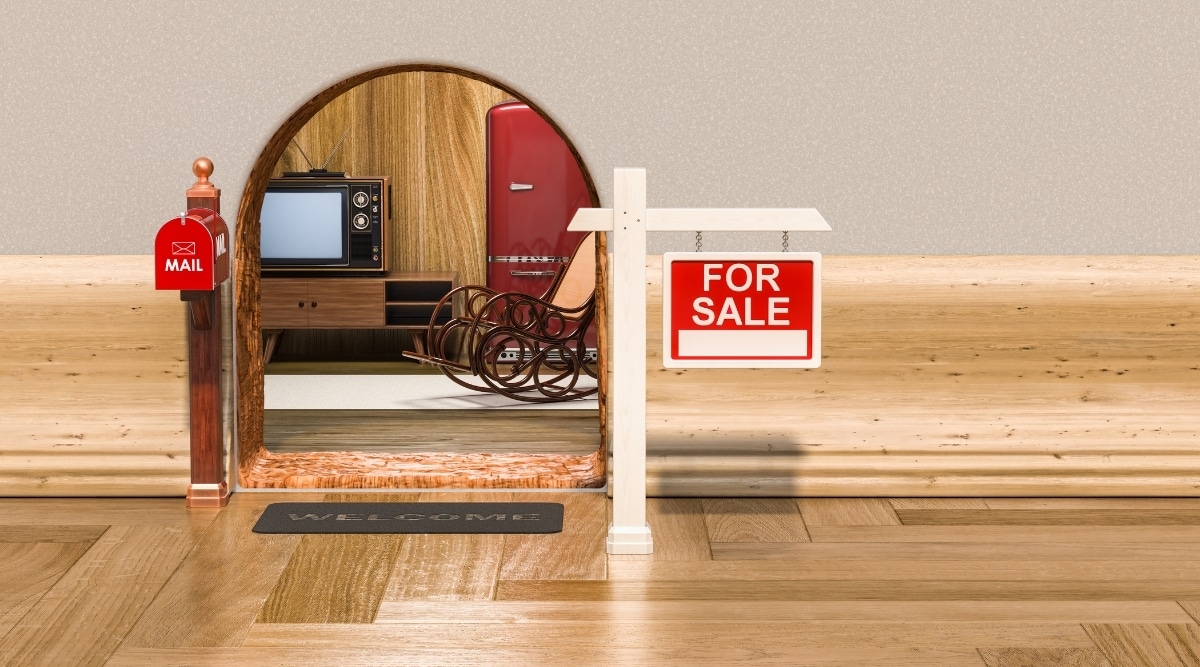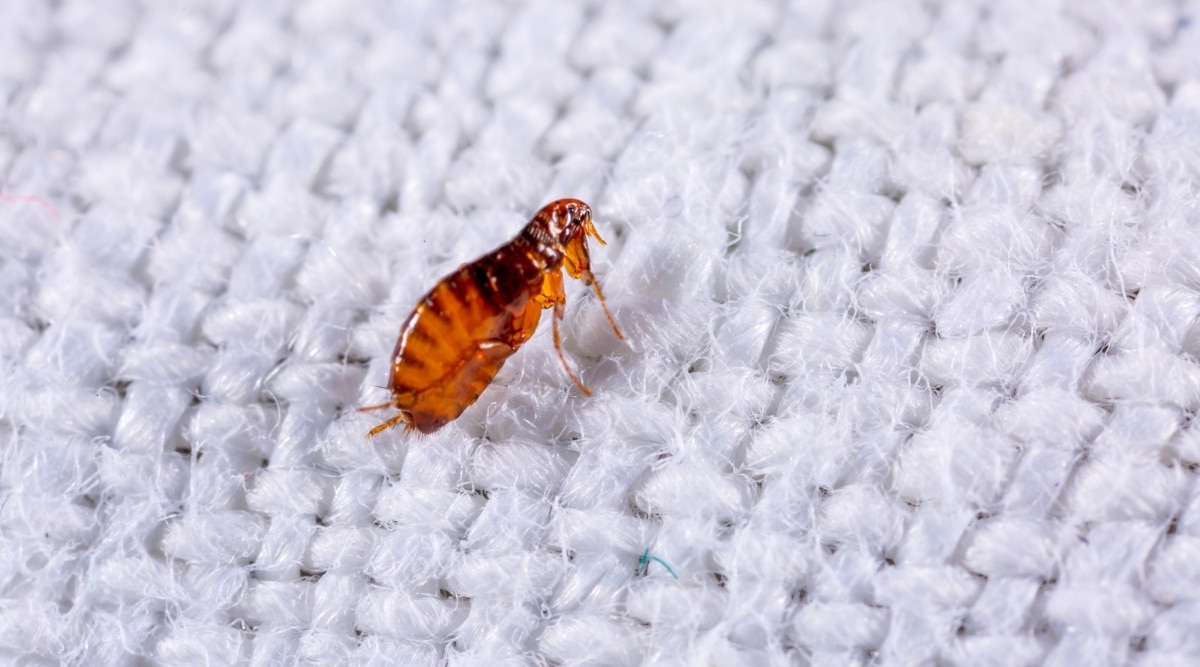Can Mice Bring Fleas Into Your Home? Prevention, Tips & More
Are you worried about mice dragging fleas into your home? Some homes are prone to a mouse invasion, due to being close to the woods, or having their home built on former farmland, or other mouse friendly territory. And if you have pets, you may be curious about mice dragging fleas into your home or infecting your pets along with them. In this article, we examine if you should be worried about mice and fleas together as a double nuisance.

Mice and rats multiply like crazy, carry diseases, and can wreak havoc on your home. They are difficult to get rid of once they take up residence in your house, and it’s only natural to wonder what else mice bring into your home.
Many homeowners handling mouse infestations end up with fleas as well. You may be even more concerned if you have pets, and are worried about mice transerring these fleas to your cat or dog that lives in your home.
So, is there a connection between the two problems? We’re taking a look at that very question today as we ask one big question…
Can Mice Carry Fleas into Your Home?

The short answer is yes. Most rodents, including mice and rats, can carry fleas into your home. All rodents can attract fleas and actually make favorable hosts for the pesky insects. Like cats and dogs, mice and rats have furry bodies that provide a habitable environment for fleas.
Mice and Fleas
Even wild mice encounter fleas, and they have no way to fight them off. Since fleas survive on blood to grow and reproduce, they require a host capable of providing nutrition and protection. Mice are cute and multiply quickly, giving fleas an endless supply of hosts.
Signs a Mouse Has Fleas
All mice, including pet mice, can get fleas. There are two main indicators that a mouse has fleas, and it’s crucial that you know both so you can get on top of the issue.
- Like dogs and cats, mice with fleas scratch a lot.
- If mice have fleas, their nest and fur will have blood spots indicating flea bites.
How Mice and Fleas Affect Your Home

Mice and fleas spell trouble for any home. From destruction and unsightliness to discomfort and disease, infestations of mice and fleas can mean endless problems until they are eradicated from your residence.
Domestic Destructors
Rodents infiltrate your home in search of food, water, and safety. They damage food stores and nest in the nooks and crannies of your home. Many mice and rats gnaw on electrical wires causing extreme damage and even fires.
Not only do mice damage your home and belongings, but they also leave behind unsightly messes. These home invaders aren’t housetrained, so you can expect to find urine and feces wherever the tiny furballs venture. It’s gross and unsightly and unhygienic because the urine and feces can spread disease.
Mice, Fleas, and Disease
Mice and rats spread more than 35 different diseases. Not all rodent diseases spread through human contact with the rodent. Some can pass through ticks, mites, and fleas that fed on the infected creature and leaped to a human host.
Did you know that fleas can spread the plague? It’s true, all three types of plague – Bubonic plague, Pneumonic plague, and Septicaemic plague result from a specific type of bacteria that rodents carry. The fleas feed off the infected host, leap to a new host, bite the new host, and spread the infection.
If you’re not freaked out by the plague, fleas can also carry a form of typhus, tularaemia, and parasitic tapeworms. They spread the diseases and parasites to every host they nibble on.
Signs You May Have Mice

How do you know you have a mouse problem? Unless you found dead mice in your home, it may just be a suspicion. If you’re worried about a possible infestation, look for these common indicators of a mouse guest.
Listen for Nighttime Activity
Mice are nocturnal, meaning they are most active at night. They can climb and jump, fit through tiny crevices, and love to scratch. Listen for strange sounds at night, usually scratching and the pitter-patter of tiny paws.
Watch for Droppings
It’s unsightly and downright disgusting, but mice do their business where they feed, breed, and nest. If you notice small, black, cylindrical rice-like pieces, you may have mice.
Safety note: do not handle the droppings without gloves or sweep them up. You don’t want to spread any viruses or bacteria in the particles. Carefully pick them up and dispose of them in sealed plastic bags.
Watch for Runways
Mice tend to travel the same routes every night. Inspect the areas along your baseboards for signs of dirt and smudges about the size of a mouse paw. They may even leave something else behind, like feces.
Nibble Marks and Holes
Real mice don’t make neat little mouse homes with doors as they do in cartoons; they collect whatever materials they can find for a nest. In your home, that means everything is fair game, including your clothes, bedding, curtains, and furniture.
Rodents prefer dark corners for making their nests, which means your drawers and cabinets are perfect places. Look for holes filled with shredded materials collected from other places in your house.
Like other rodents, mice teeth grow continuously, which means they need to gnaw hard objects to wear them down. Unfortunately for you, this means wires, plastic, and cables for your electronics, appliances, and furniture.
Safety note: damaged electrical wires can cause short circuits, power outages, and fires. If you noticed damage to any of the cables or wires for electronics or appliances, unplug the attached devices. Damage to electrical wiring should be addressed by a professional.
Can You Smell that?
Mouse urine has a unique odor that is especially obvious in close quarters, like pantries and cabinets. The stale, musky ammonia scent is strong and becomes more apparent as the rodents mark their territory.
Missing Food
Mice eat a lot for such small creatures, and they like the same foods we do – grains, seeds, nuts, fruits, and candy. They seek out high-fat foods, including bacon, butter, and cheese (see, it’s not a myth!). If you notice tears or holes in packages with food missing, mice may be sharing your meal.
Safety note: do not eat from packages that mice have infiltrated. Some of the diseases they carry are harmful to humans and pass through food, including salmonella and hantavirus.
Signs You May Have Fleas

Once you identify a mouse problem, it’s not difficult to make the leap to a flea infestation. Rats and mice are common causes of flea infestations. However, if you’re not quite sure there are fleas involved, watch for these indications.
Itching and Scratching
If you have pets, watch your furry companions for excessive itching and scratching associated with flea bites. Even if you don’t have pets, humans make prime hosts for fleas. If you feel the need to scratch a lot, especially in parts of your body with hair, you may want to look for fleas.
Physical Signs of Flea Bites
Flea bites leave behind red welts and bumps that sting. If you notice these spots and can’t explain them, they’re possibly flea related. Make sure you treat the areas properly and rule out other types of critters, like bed bugs.
Something Odd in Your Bed
Did you notice powdery, white mounds on your bed? What about black or brown flecks resembling powdered pepper? Flea eggs and feces are recognizable and easily found on your bedding (or your pet’s bedding) if you look for it.
Hair Loss in Furry Companions
Pet parents may notice hair loss in their furry family members. While fleas don’t cause hair loss in humans, they do cause alopecia in pets. Though it is a severe reaction, it’s a strong indication of a flea problem.
Flea Eggs on Flooring or Surfaces
It’s also quite possible to see eggs on your carpet, or hardwood floors. While these eggs may be microscopic, you may notice them looking a little like dandruff, and sitting in piles on your floor.
Treating Mouse and Flea Infestations

Once you know you have an infestation on your hands, you need to take action as soon as possible to prevent further damage. There are some steps you can take immediately to help your situation, but it’s in your best interest to contact a professional for assistance and a long-term solution.
Seal the Cracks
Inspect the exterior of your home for nooks and crannies that a mouse could squeeze into. Seal them with an appropriate patch. Not only do you keep the mice out, but you also shut down access to the fleas they carry.
Maintain Your Greenspace
Tall grass, overgrown bushes, and weeds create food and shelter for mice and fleas. Keeping your grass mowed, bushes trimmed, and weeds under control are the best way to let rodents know they’re not welcome.
Treat Your Pets
Flea prevention is important for your pets to protect them outside. Think about how many places they’re exposed to fleas on walks and running at the dog park.
Keep Floors Clean
Cleaning your floors, carpets, and upholstery regularly removes many things from your home’s surfaces, including eggs, larvae, and adult parasites. Using household goods like baking soda can help repel pests, including fleas. The cleaner you keep your space, the less hospitable your home feels to pests.
Wrap Up
When you need peace of mind and a long-term solution to a pest problem, it’s best to contact a professional. Exterminators know how to eradicate pest problems and provide long-term solutions.
It’s in your best interest to contact somebody who won’t just handle the problem, but teaches you how to protect yourself, and prevent it from happening again. Professional exterminators can offer practical solutions and preventative measures for fighting mouse and flea infestations.
Share this post
Save time and money on pest control
Subscribe to expert DIY pest control tips, pest control product reviews and information.




